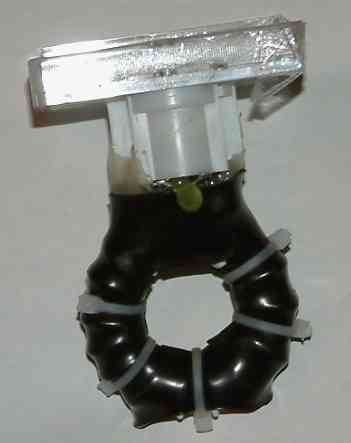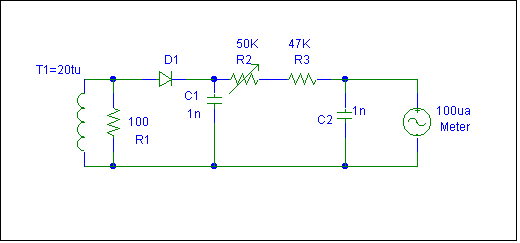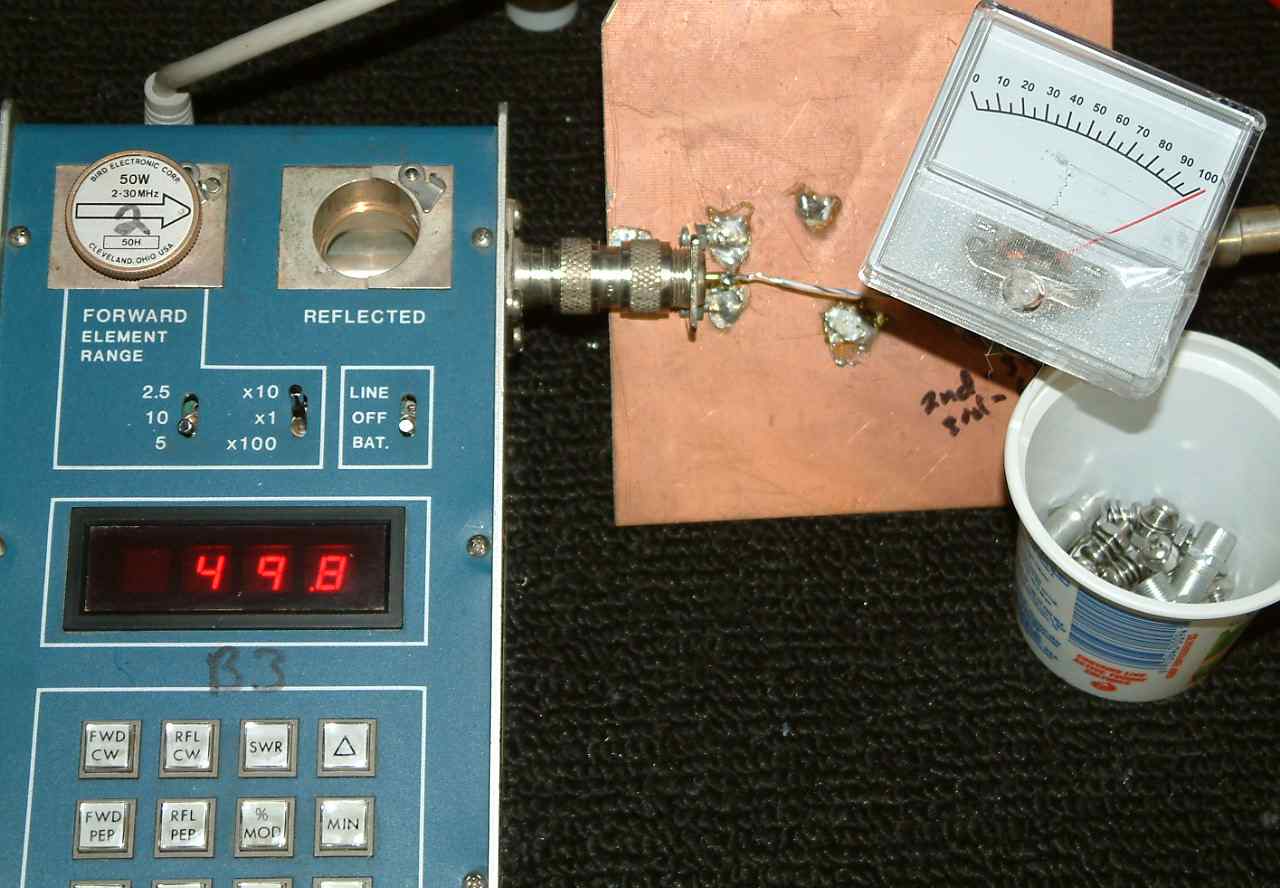|
It takes a special meter to measure current
accurately in the presence of strong electric fields, and to not disturb
low-capacitance high impedance systems. The meter described below is suitable
for measuring RF current accurately in high voltage applications, such as short
antennas. It is also accurate in normal applications
Another current meter project link (not suitable for
mobile antenna measurements, however!)
http://www.ifwtech.co.uk/g3sek/clip-on/clip-on.htm
Low Capacitance, Voltage Immune, RF Current Meter
The meter is constructed with a 100uA all plastic case meter. The meter scale
is plastic. The movement and all metallic areas are small. The lack of large
metallic components minimizes stray capacitance
added to the circuit under test by the proximity of the current meter.
Low capacitance ensures the meter has the least possible effect on the
circuit being tested.
This meter has a 1.5″ toroid current transformer on the rear. Just behind
the meter is a calibration pot and all the circuitry. The toroid and circuitry
is hot-melt glued to the meter with only the screwdriver calibration pot
exposed.
I did not add a Faraday shield because the shield would increase the
capacitance. Since this entire meter floats above ground there is no need for a
shield. Balance is not critical
when the load is
physically very
small and floats
from ground because
common mode
impedance is very
high.

The meter has a low threshold Schottky diode detector, a series resistor for
calibration, and standard .1uF bypass capacitors.

T1 is a current transformer.
I used a powdered
iron T150-2 core. When the single turn primary (a whip or mast)
has 1 ampere, the secondary will have .05 amperes (inverse of the turns
ratio). R1 flattens the response and limits the voltage.
It turned out
that 100 ohms gave
the flattest
response from 1.8 to
30 MHz, which is the
frequency range I
intend to use the
meter on. With 100 ohms we
have .05*100=5 volts RMS. The peak dc voltage is 1.414 times 5= ~7 volts. C1 is
a filter capacitor for the RF pulses, R2 and R3 set the FS range. With 100uA
meter the resistance is 10,000 ohms/volt. 7 volts requires 70K ohms, which will
be approximately midway on R2.
Note the choice
of a low current
meter and >50k
multiplier
resistance. The low
current and high
voltage improves
detector linearity.
Dissipation in R1 is .25 watts from .05 amperes (T1 current) times 5-Vrms
(secondary voltage of 5v with .05a flowing through 100 ohms).
Calibration
The meter is tracked in a test fixture for linearity. The actual fixture used
is shown below.

The test fixture consists of two UHF female connectors soldered to a sheet of
PC board. There is a single #16 Teflon wire running between the center pins.
Note the numbers “2” and “B3” on the meters. My elements
and meters have calibration charts that correct for linearity errors in tracking
and readings. In this case I’ve applied 50 watts to a precision 50 ohm load,
making wire current 1-ampere.
The meter is calibrated and scale was tracked from 1 ampere down to .2
amperes.
FS accuracy is not required in comparison measurements, since the meter
references against itself. Linearity within a few percent is important.
This type of meter is much more reliable and linear than thermocouple RF
ammeters, and perturbs systems much less. Stray capacitance added to the system
being tested is very small, because only the proximity of the meter and the
compact wiring area. Contrast that to actually connecting a meter in the line
with the associated lead lengths and capacitance of the meter itself, and the
advantages of a transformer coupled meter become apparent.
Back to Mobile and loaded antennas.
|


